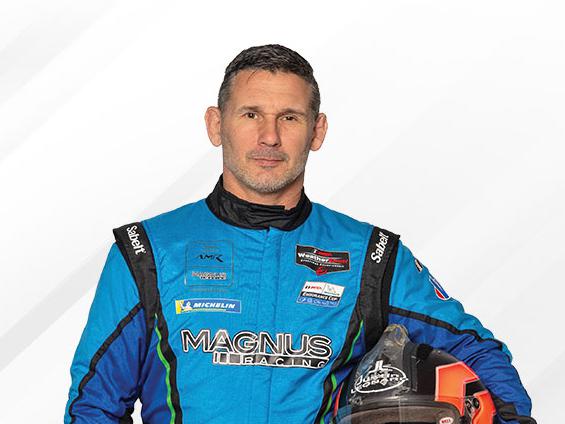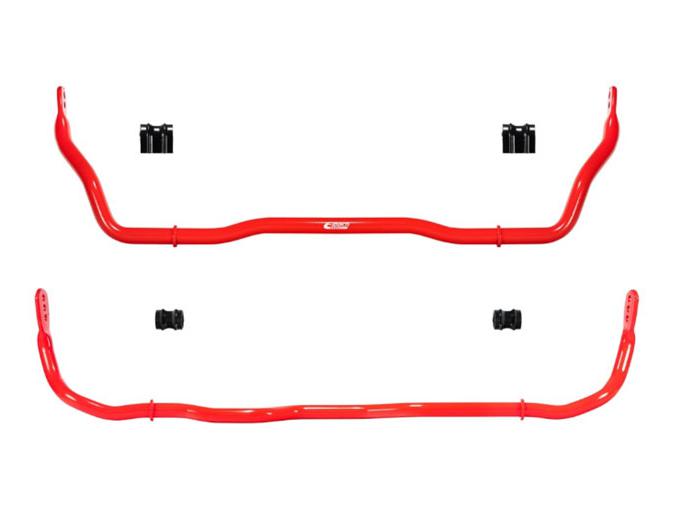Industry Insights: Matt Martelli
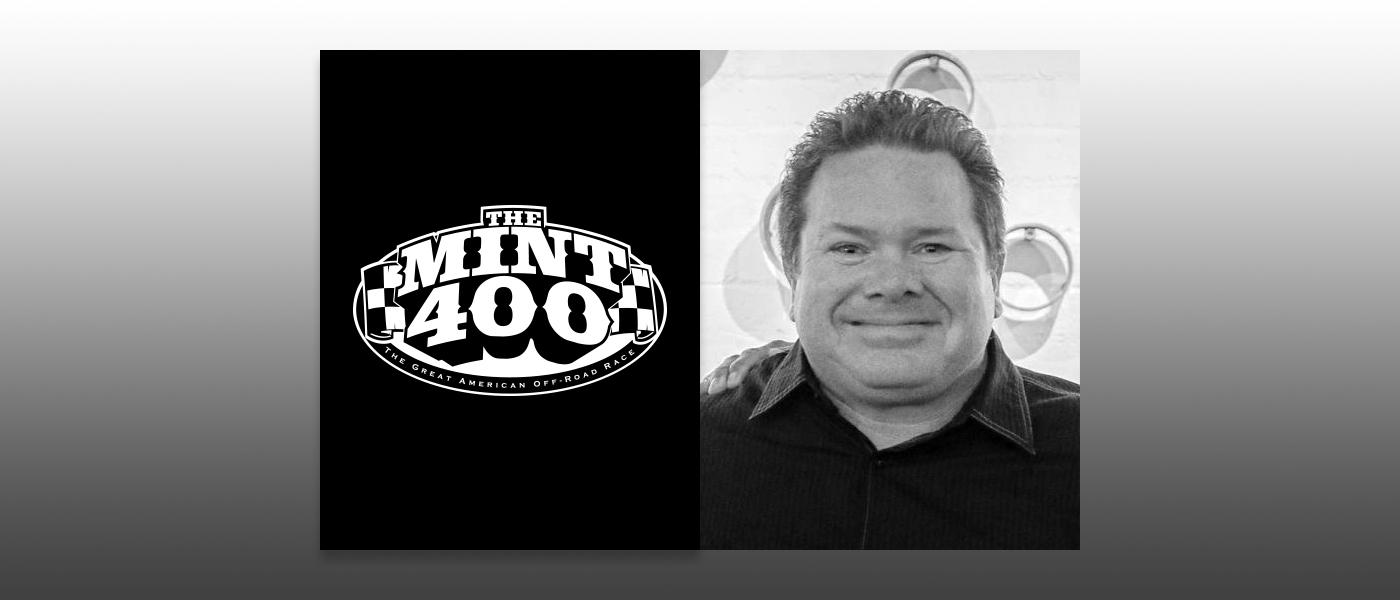
Drawing on decades of experience creating captivating online content, this industry veteran and producer of the famed Mint 400 shares why he is “excited about the future of off-road racing” while walking hand-in-hand with government agencies and appealing to a younger demographic, all with the focus of securing the sport for future generations.
Sometimes it takes new eyes to see opportunity clearly. That was the case for Matt Martelli, who found himself the new guy in a field dominated by long-established competitors. Martelli had founded Mad Media in the early 1990s, just in time to catch the reinvented Internet revolution, producing content that went viral before anyone thought to call it viral.
In the decades since that time, Martelli has continued to lead in the competition to create engaging and exciting events and content. Working with his brother Josh, Matt’s successes include The Gymkhana Series of videos starring Ken Block, which have racked up more than 550 million views, as well as the XP1K series of videos featuring the Polaris RZR XP1000 side-by-side UTV performing impossible stunts.
In 2010, Martelli took over as CEO of the Mint 400 off-road race in the Nevada desert. This event is one of the most popular off-road competitions in the world, pulling more than 65,000 on-site spectators and 550 racing teams to the Las Vegas, Nevada, region every March. Trading on his experience with viral video, Martelli now livestreams the Mint for those who can’t be there, further extending his reach and the appeal of the sport.
Martelli and his team added the inaugural California 300 Off-Road Race in Barstow to their list of events this past October, with more than 200 race teams joining the action.
We caught up with Martelli to talk about his recipe for success.
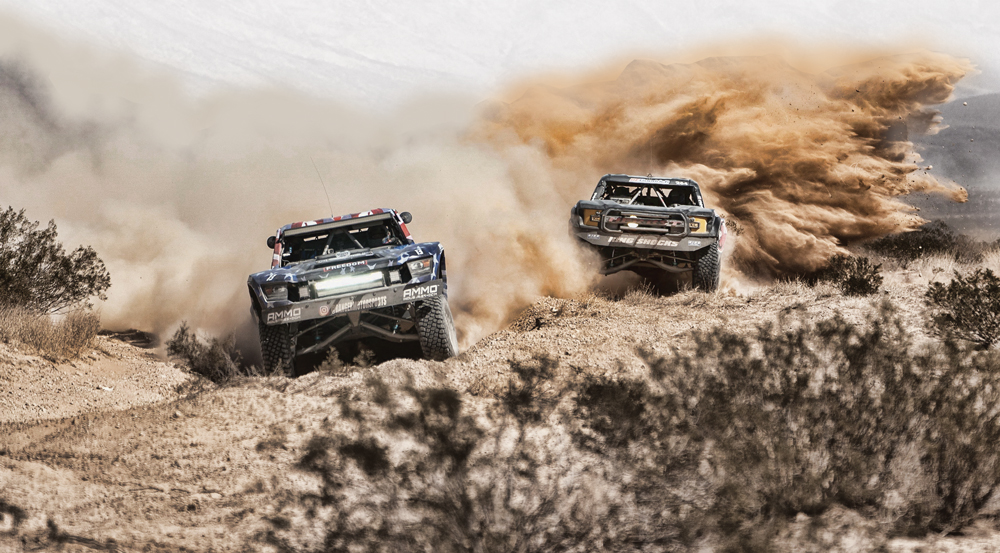
PRI: How did you get started with Mad Media and then promoting the Mint 400?
Martelli: We were working in off-road as a media group, and lot of the promoters were in their early to late 70s. They were just antiquated with their business practices, especially when it came to content marketing. We helped get sponsorship when the Mint 400 was resurrected, and we put together a television show that really kind of stunned everybody. It was the first time RED [digital cinematography] cameras had been used in the field, and we captured some really remarkable content. The promoter ran it for a couple of years, and it just got a little over their heads. So we purchased the Mint 400 from them with the idea that we could turn it into X Games for off-road.
PRI: Do you have problems working with government agencies and to get access to lands to make your events happen?
Martelli: No, I wouldn’t characterize it like that. I think there’s a line that blurs between recreational off-road and off-road racing. With the rise of UTVs, there have been a lot of people out on trail systems doing dumb things, frankly. That’s putting pressure on off-road in general. But as far as off-road racing goes, no, we’ve had really the opposite experience. Yes, we have to work with the Bureau of Land Management (BLM) and state parks and different governmental organizations, but my only complaint is they just don’t move as fast as we want them to. But we’ve had good relationships with all the government agencies.
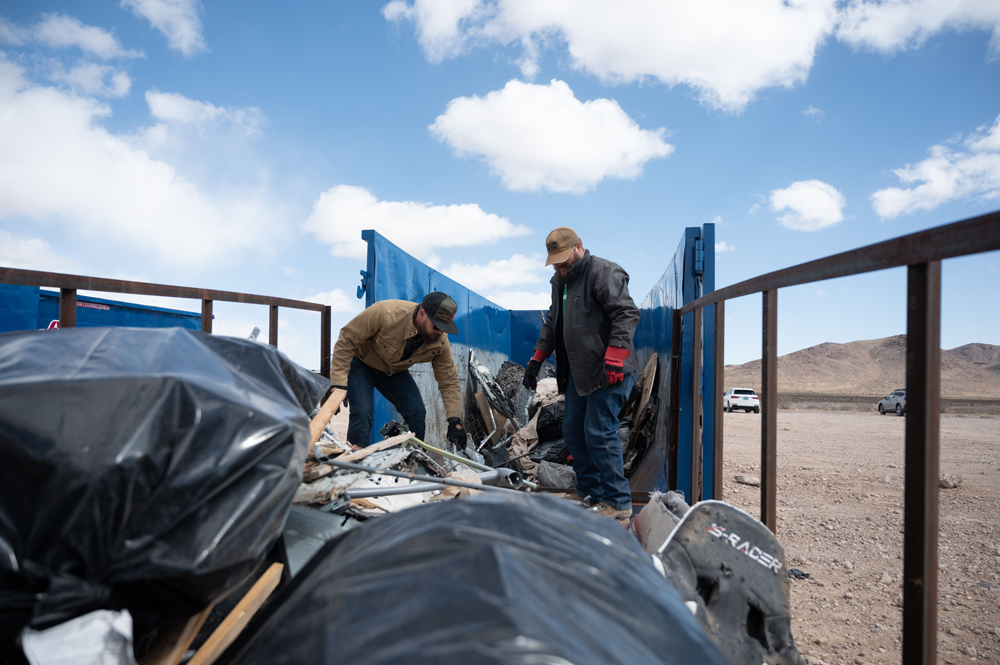
PRI: You have a new event called the California 300 in Barstow. Does that continue your story of good relations with government?
Martelli: It’s funny, because the stereotype in California is, “Oh man, this is going to be even harder than Nevada.” But it was actually easier. We have a very good reputation. We’ve been doing desert cleanups and we’ve cleaned more trash out of the desert than any organization that I know of. Literally hundreds of tons. Information about that is on our Mint 400 website. So, we basically called the BLM and gave them our intent. Also, the way that we operate is we always do desert cleanups before we race, because generally 90% of the stuff that’s dumped out there is not from off-roaders, it’s from illegal dumping and shooters. We’ve had to clean up washing machines, RVs, boats, all of that.
It’s a stereotype where people looked at off-roaders as destroyers, but it’s the opposite. The whole point of why you off-road is to get out of the city, to get away from the destruction, and the stress, and the trash, and all that. We don’t want to see that stuff in our environment. And so, we want to lead, and do our part, and show people that off-roaders are responsible land users. That message is important to us. And we’re taking it even further with our events. We’re beginning to eliminate single-use plastic, to reduce our environmental impact to be carbon neutral, or carbon positive. People don’t realize, but a few years ago we tried to measure the amount of land that we used in the Mojave Desert. It was such a small percentage of the Mojave that it wasn’t even measurable. It was a fraction of a fraction of a percent.
PRI: How much do media considerations influence how you create an event?
Martelli: Oh, they definitely do. I can tell you, when we create a course, we think of it in terms of, is it good for the racer? Is it good for the spectators? But as media guys too, I don’t want to go out and shoot boring stuff, I want the vehicles to be doing dynamic things, and I also want to put them in an environment that’s beautiful, that showcases the juxtaposition between the violence of what we’re doing in racing and the beauty of the environment.
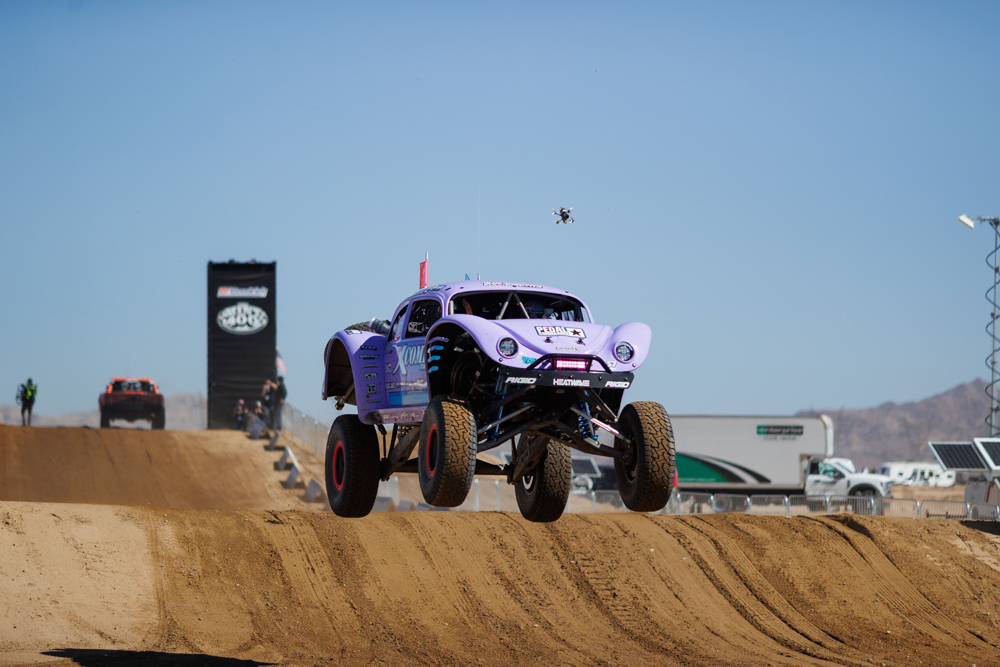
PRI: Do you think there should be better alignment with off-road class designations across promoters and sanctioning bodies?
Martelli: Yes, absolutely, 100%. One of the problems that we inherited is that there were a lot of classes that were created before we crossed over to being promoters. Then we have other promoters that allow modifications that I would deem unnecessary. Nobody likes to be the bad guy and say, “no.” But, when we launched our event, we went out and found the best people to make the best, most informed decisions. Our technical director, Bill Savage, literally wrote the book on off-road racing. Then we have a group of advisors that includes racers as well as manufacturers, and all have input on our decisions. We hope in the future to push more of a unified front, so that race leagues are on the same page. But to be honest, it’s difficult for us.
PRI: Do you think there’s a place for electric vehicles in off-road racing? How will you integrate EVs into your events?
Martelli: Sure. Three years ago, we launched an EV class, and we invited all the different EV manufacturers to come race with us. We told them that we’d be accommodating, and that we are interested in working with them. In other words, we didn’t want them to come and think, “Well, if I don’t do all 400 miles, it’s a fail,” or, “If my vehicle can’t do a hundred-mile loop, it’s a fail.” We have pits every 30 miles. We’re more than willing to work with EV vehicles, or for that matter, any other type of technology that wants to prove its value in off-road racing. I can speak for myself, and then also Dave Cole from King of the Hammers has really embraced EVs. He had one race with him last year that was a garage-build EV, and he allowed them to race a modified course to get their finish, which was really cool. So, we’re really open to it. I think that we just haven’t had many of the EV manufacturers step up and want to be involved. There’s an EV motorcycle brand called Volcon that is planning to race with us next March. If they do, that’ll be historic, because that’ll be the first EV to finish a desert race. The beauty of it is, off-road racing is the MMA of motorsports. We don’t care what style you have, just come and show its effectiveness.
PRI: What do you think that other racing disciplines can learn from the success of the events that you’ve done, in terms of getting media attention and social media attention?
Martelli: I really think it’s content, and it’s a compromise between action-based content and storytelling. Telling the stories of your racers, the race league directors, the whole gamut. Sometimes it’s like they have an amazing character set, an amazing number of factories and teams that are involved, but you don’t see hardly any of that in their coverage, or in their social media. I think you have to free up the content and not be afraid of that. Obviously, the old mentality is to do all these TV deals, and their television numbers are great, but they’re still fumbling with social media. It’s because they carry that old mentality. But I don’t think it’s either/or. I think it’s both. In this day and age, the more content you can put out, digitally and on social and make it free, make it consumable, the better you’re going to do.
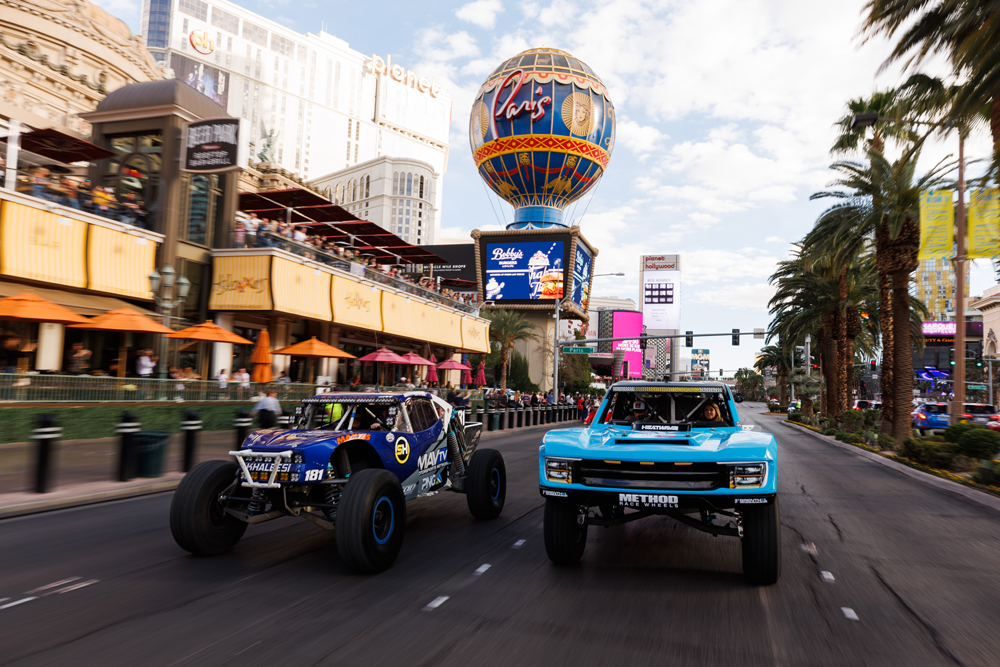
PRI: What’s coming in 2023 that we should be looking out for? Is there anything really exciting about to happen?
Martelli: I’m really excited about the future of off-road racing because we’ve never had what we have now, which is a generation of youth that have now been racing with us for a couple of years. During the pandemic, UTV sales exploded. That means we have a massive new user base that’s never been exposed to off-roading or off-road racing. They bought these vehicles and they kind of don’t know what to do with them. So I’m excited about the short-term future of off-road racing and the long-term future, because, like I said, this is the first time in the history of off-road racing that we’ve had kids being raised and racing since six years old. Right now, there’s a tremendous amount of opportunity for us to gain new audience and grow the market.
PRI: How are you marketing your product to people under 40 and even more importantly, those people under 20?
Martelli: It’s all social media, but we started youth racing at the UTV World Championship now eight years ago, and it’s just exploded. The beauty of it is in that age demographic, I would call them super-users, because they’re born with a cell phone in their hand and they’re consuming content and producing content. From day one, they understand it. So it’s not as if you have to wait until somebody’s 20 years old to market to them. We almost don’t have to market to them, because they’re consuming from such an early age that they get it. The more content that we put out, the more that we include them. We’ve added youth racing to our big races, to the Mint 400 and California 300, because we want to make sure that those kids feel like they’re part of the big show.
So to answer your question, how do you market to younger people? It’s really social media, but it’s the same type of content that’s always worked. Number one: be authentic. Number two: don’t be condescending. They know we want them to buy a product. You don’t even have to tell them that, you just have to show them contextually what the product is. If it’s a good product, they’ll consume it. The sophistication level is higher than it’s ever been from a very young age, but if you know that, then that becomes a good thing, it becomes empowering.
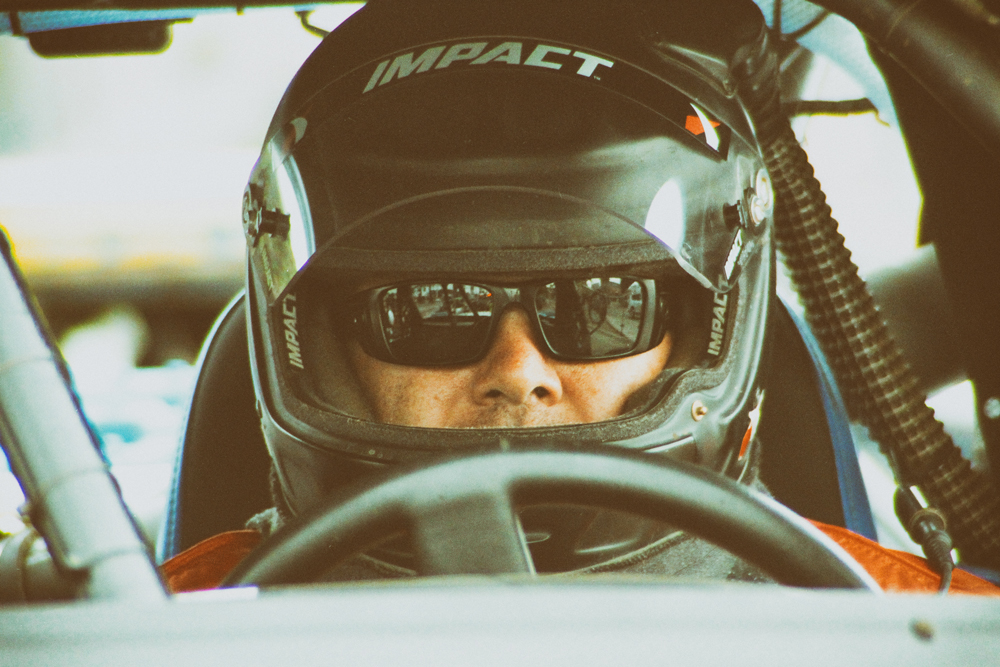
PRI: Do you think there are any new products or equipment that are coming in the near term that could materially affect your sport?
Martelli: There are a couple of things. One is, last year Polaris launched the Pro R, which is a new vehicle platform that is probably the most capable, race-ready, off-the-shelf, off-road vehicle that’s ever been built. It’s already being raced, but the more I think people realize that all you need to do is add some safety modifications to it, then it’s a serious race car. When you look at being able to go 100 miles an hour over three-foot whoops, that’s remarkable, right? For the price, it’s a game-changer.
The other thing is, we have an evolution happening in real time right now at the top level of off-road racing with four-wheel-drive Trophy Trucks. This technology right now is being proven out. They’ve been able to win most of the major races, but they haven’t won the California 300, which is a rougher, more technical race that favors two-wheel-drive vehicles. So watching this evolution of technology happen in real time is really cool.
PRI: Who do you look up to, professionally? Do you have any off-road racers who you look at as that guy was the inventor or the archetype?
Martelli: Off-road racing is filled with people I would call unrecognized geniuses. I’m fortunate that a lot of these people have shared information with me and mentored me. But really, who I look up to in what we do would be Mickey Thompson. Mickey was able to achieve things in multiple genres and in off-road racing, track racing, circle track racing, as a racer, as a promoter, as a team owner, as a manufacturer. A lot of people don’t know that he invented water barriers, harness systems, all kinds of stuff. So I would say he’s definitely the biggest influence on me and my brother.
Other than that, there are a lot of smart businesspeople in this culture, and we get the opportunity to pick their brains. Sal Fish, who retired as CEO of SCORE, is one of the godfathers of off-road racing. Another team that’s had a huge impact on us as well is Cal Wells and PPI Motorsports. Nobody did it better. I could go down a huge list of people who have helped give us information and helped guide us along the way.
PRI: Is there anything else you want to say?
Martelli: We’re really excited about the California 300, because it’s the first time in 27 years that we’ve had a major desert off-road race in Southern California, which is the home of our culture. It’s within a two-and-a-half-hour drive of 29 million people. It is the biggest off-road market in the world. We’re really excited about that and growing the event and sharing with people how badass this race course is, right in our backyard in Barstow. It goes back to the days of the Fireworks 250 being a major race there, or other famous races like Barstow to Vegas. We’re looking to bring that level of event back to Southern California, similar to what we’ve done with the Mint. Truthfully, I think it’s going to eclipse the Mint very quickly just because of where it’s located.
 MEMBERSHIP LOGIN
MEMBERSHIP LOGIN JOIN PRI
JOIN PRI
